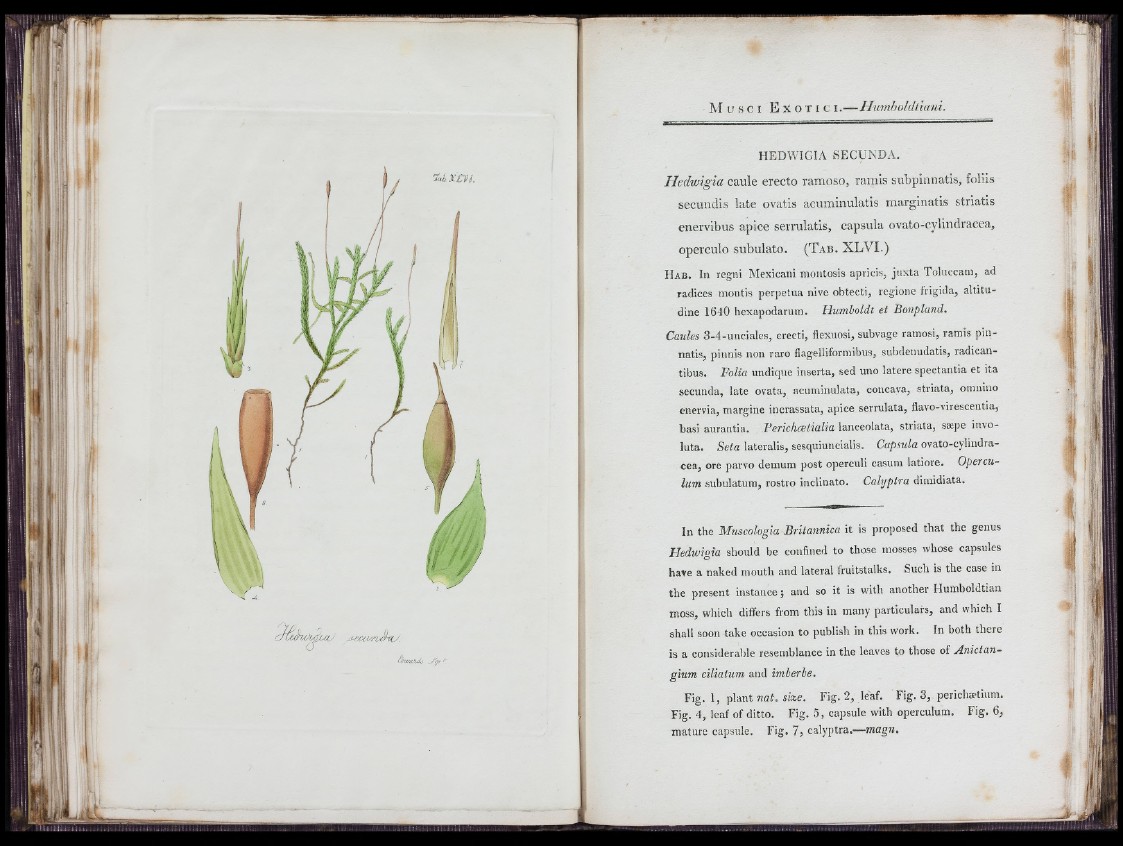
7ah XXVL
cJuj-uÁToc/y yeuimJ)-oL/
Ú
HEDWIGIA SECUNDA.
Hedwigia caule erecto ramoso, ramis subpinnatis, foliis
secundis late ovatis acuminulatis marginatis striatis
enervibus apice serrulatis, capsula ovato-cylindracea,
operculo subulato. ( T a b . XLVI.)
H a b . In regni Mexicani moiitosis apricis, jnxta Toiuceam, ad
radices montis perpetua nive obtecti, regione frigida, altitudine
1640 hexapodarum. Humholdt et Bonpland.
Caules 3-4-unciales, erecti, flexuosi, subvage ramosi, ramis pinnatis,
pinnis non raro flageliiformibus, subdeuudatis, radican-
tibus. Folia undique inserta, sed uno latei’e spectantia et ita
secunda, late ovata, acuminulata, concava, striata, omnino
enervia, margine incrassata, apice serrulata, flavo-virescentia,
basi aurantia. Ferichætialia lanceolata, striata, sæpe involuta.
Seta lateralis, sesquiuncialis. Capsula ovato-cylindracea,
ore parvo demum post operculi casuni latiore. Operculum
.subulatum, rostro inclinato. Calyptra dimidiata.
In the Museologia Britannica it is proposed that the genus
Hedwigia should be confined to those mosses whose capsules
have a naked mouth and lateral fruitstalks. Such is the case in
the present instance ; and so it is with another Humboldtian
moss, which differs from this in many particulars, and which I
shall soon take occasion to publish in this work. In both there
is a considerable resemblance in the leaves to those of Anictan-
gium ciliatum and imberbe.
Fig. 1, plant nat. sh e . Fig. 2, leaf. Fig. 3, perichætium.
Fig. 4, leaf of ditto. Fig. 5, capsule with operculum. Fig. 6,
mature capsule. Fig. 7, calyptra,—magn.
I